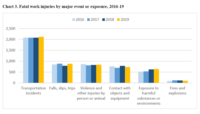MAP-21 Toughens 'Buy America' Requirements, U.S. Industry Says
The House Transportation and Infrastructure Committee’s top Democrat, Nick Rahall (W.Va.), helped lead the push to include the "Buy America" provisions in MAP-21. Rahall said, “American infrastructure should be built with American steel, iron and craftsmanship and not shipped in by our overseas competitors while our tax dollars are sent back in return.”
He added, "[MAP-21] closes some of the loopholes that have allowed this egregious practice to persist and takes steps to ensure that our roads and bridges are built with American labor and materials.”
Rahall said, “Unfortunately, provisions that would have made 'Buy America' requirements even stronger and kept more jobs here at home were left on the cutting-room floor.” That was a reference to a Senate-approved rail title that included "Buy America" provisions but was dropped in the late rounds of negotiations on the final MAP-21 bill.
Organized labor also sought the "Buy America" changes. “The United Steel Workers was very engaged and worked very hard to get improvements enacted to the existing 'Buy America' preferences under the jurisdiction of the U.S. Dept of Transportation,” says Linda Andros, legislative counsel with the United Steel Workers.
She adds, “In particular, we are very pleased that a long-standing loophole has been closed so that, when states receive federal funding for the construction or repair of highways or bridges, then the 'Buy America' preference will apply to the entire project, regardless [of whether] some state funds [also] are used.”
But Jayson Myers, president and CEO of Canadian Manufacturers & Exporters (CME), an Ontario-based business organization, says of MAP-21's "Buy America" provisions, “We’re concerned, clearly, about it and disappointed about these provisions,” which, he says, makes the requirements more stringent than before.
He adds, “It’s clearly a concern for Canadian companies that are longtime suppliers of construction material.”
CME had criticized the "Buy America" provisions in the 2009 American Recovery and Reinvestment Act. “All it did was slow down the projects. It made them more expensive,” Myers says.


